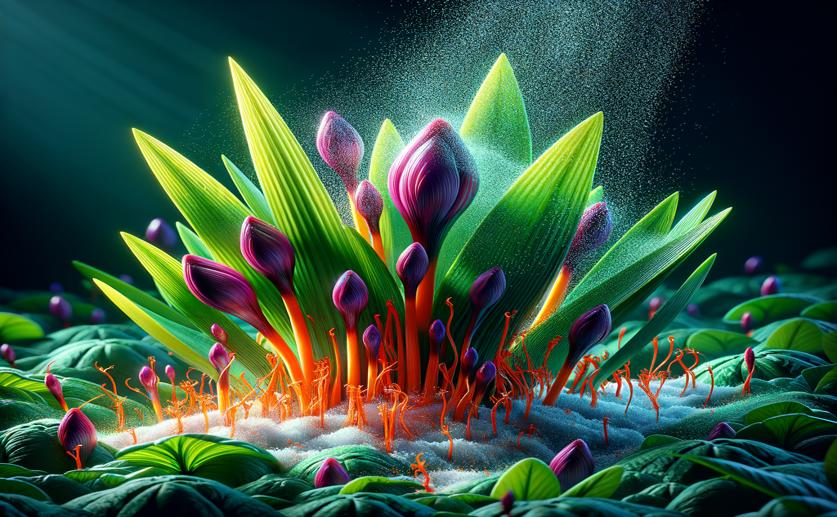
How Sugar and Growth Signals Trigger Flowering in Saffron Plants
Greg Howard
4th May, 2024

Image Source: Natural Science News, 2024
Key Findings
- Researchers discovered genes that control when saffron plants flower, focusing on plants grown in the Himalayas
- Larger saffron corms (bulbs) were found to have more active genes related to flowering and energy management
- The study may help improve saffron yields by informing breeding practices for plants with smaller corms
References
Main Study
1) Transcriptome analysis of apical meristem enriched bud samples for size dependent flowering commitment in Crocus sativus reveal role of sugar and auxin signalling.
Published 3rd May, 2024
Journal: Molecular biology reports
Issue: Vol 51, Issue 1, May 2024
Related Studies
2) Adding color to a century-old enigma: multi-color chromosome identification unravels the autotriploid nature of saffron (Crocus sativus) as a hybrid of wild Crocus cartwrightianus cytotypes.
3) Epigenetic Variability Among Saffron Crocus (Crocus sativus L.) Accessions Characterized by Different Phenotypes.
4) De novo transcriptome assembly and comprehensive expression profiling in Crocus sativus to gain insights into apocarotenoid biosynthesis.
5) Transcript profiling of carotenoid/apocarotenoid biosynthesis genes during corm development of saffron (Crocus sativus L.).



 1st May, 2024 | Greg Howard
1st May, 2024 | Greg Howard